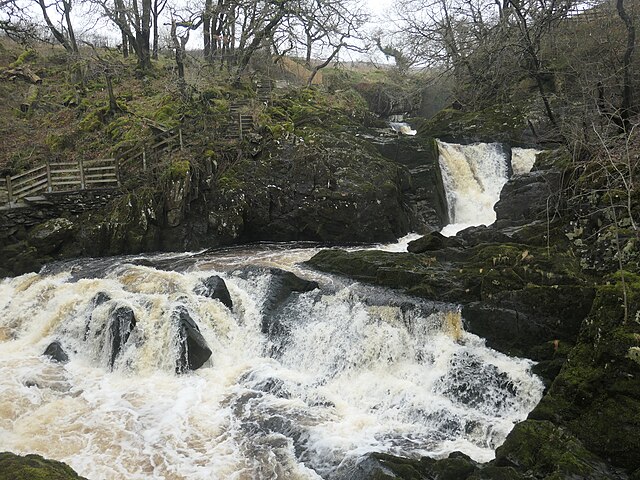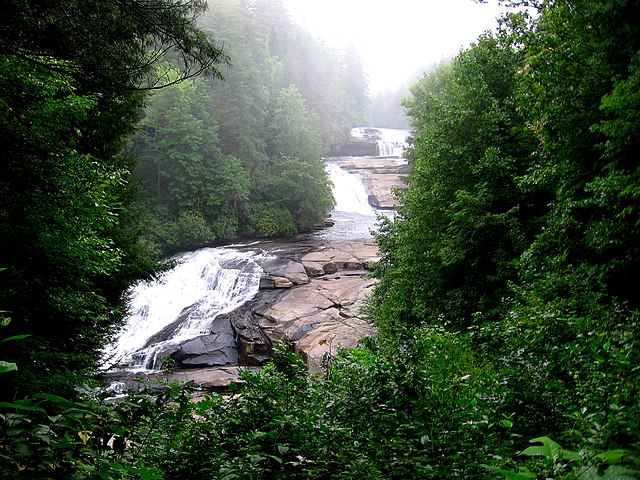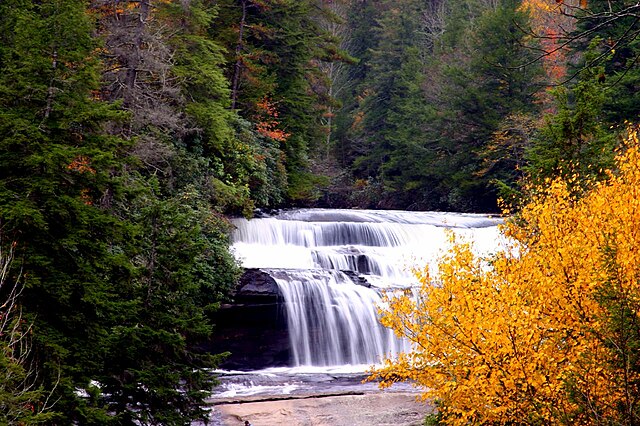What Makes Triple Falls So Special?
Have you ever wondered what it feels like to witness nature’s perfect hat trick? Triple Falls isn’t just another waterfall destination – it’s a breathtaking spectacle where three distinct cascades create a symphony of rushing water that’ll leave you speechless. These magnificent waterfalls have captured the hearts of adventurers, photographers, and nature lovers worldwide.
Picture this: you’re standing on a moss-covered trail, surrounded by towering evergreens, when suddenly the sound of cascading water fills the air. As you round the corner, three separate streams of water plunge dramatically down rocky cliffs, each with its own personality and charm. That’s the magic of Triple Falls – a natural wonder that proves sometimes the best things really do come in threes.
Triple Falls locations offer more than just stunning views. They provide an escape from the digital world, a chance to reconnect with nature’s raw power, and an opportunity to create memories that’ll last a lifetime. Whether you’re a seasoned hiker or someone just starting their outdoor journey, these waterfalls offer something truly special.
The beauty of Triple Falls lies not just in their visual appeal, but in the complete sensory experience they provide. The thunderous roar of water hitting rock, the cool mist on your face, the earthy scent of the surrounding forest – it’s nature’s own spa treatment that money can’t buy.
Where to Find Triple Falls Around the World
You might be surprised to learn that Triple Falls isn’t just one location – it’s a name shared by several stunning waterfall destinations across the globe. Each offers its own unique character and challenges, making every Triple Falls adventure a new discovery.
Oregon’s Triple Falls Trail
The most famous Triple Falls is located in Oregon’s Columbia River Gorge, and for good reason. This spectacular trio of waterfalls is easily accessible via the Oneonta Gorge area, making it a favorite among Pacific Northwest adventurers. The Oregon Triple Falls features three distinct tiers, each dropping at different heights to create a mesmerizing staircase effect.
What sets Oregon’s Triple Falls apart is its accessibility combined with dramatic beauty. The trail offers multiple viewpoints, allowing visitors to experience the falls from various angles. The surrounding old-growth forest creates a cathedral-like atmosphere that makes every visit feel sacred.
The Oregon location is particularly famous for its photography opportunities. The way sunlight filters through the forest canopy and dances on the falling water creates natural spotlights that photographers dream about. During peak flow seasons, the mist creates rainbow effects that add an almost magical quality to the scene.
Triple Falls in Other States
Beyond Oregon, you’ll find Triple Falls in several other states, each offering unique characteristics. North Carolina boasts its own Triple Falls in DuPont State Forest, known for its wide, curtain-like cascade that’s featured in Hollywood movies. This southern version offers a completely different experience, with warmer weather and different vegetation creating a distinct atmosphere.
Colorado’s Triple Falls near Ouray provides a high-altitude adventure with stunning alpine scenery. Here, the falls are fed by snowmelt, creating powerful torrents during spring and early summer. The Rocky Mountain setting adds dramatic peaks and expansive views to the waterfall experience.
Washington state also claims its own Triple Falls, offering yet another Pacific Northwest perspective with dense forests and rugged terrain that challenges even experienced hikers.
Planning Your Triple Falls Adventure

Success in any outdoor adventure lies in proper planning, and visiting Triple Falls is no exception. Whether you’re planning a day trip or an extended outdoor vacation, understanding the logistics will make your experience much more enjoyable.
Best Time to Visit Triple Falls
Timing is everything when it comes to waterfall viewing. The best time to visit Triple Falls depends on what you’re hoping to experience. Spring typically offers the most dramatic water flow, as snowmelt and seasonal rains combine to create powerful cascades that’ll take your breath away.
Summer provides the most comfortable hiking conditions with stable weather and longer daylight hours. However, water levels might be lower, creating a different but equally beautiful experience. The reduced flow often reveals rock formations and details that are hidden during high-water seasons.
Fall brings spectacular foliage that frames the falls in brilliant reds, oranges, and yellows. This season offers photographers incredible opportunities to capture the contrast between the eternal white water and the changing autumn colors.
Winter visits can be magical but require proper preparation. Snow and ice create unique formations, but trails may be challenging or closed. Always check local conditions before attempting a winter visit.
What to Pack for Your Triple Falls Hike
Proper gear can make the difference between an amazing adventure and a miserable experience. Start with sturdy, broken-in hiking boots with good traction – wet rocks near waterfalls can be incredibly slippery. Waterproof or water-resistant clothing is essential, as mist from the falls can soak through regular fabrics quickly.
Don’t forget a quality camera or smartphone in a waterproof case. Triple Falls offers countless photo opportunities, and you’ll want to capture memories without worrying about water damage. Extra batteries are crucial, as cold and moisture can drain power faster than expected.
Pack layers for changing weather conditions. Mountain and forest environments can shift from warm sunshine to cool mist within minutes. A lightweight rain jacket, fleece or insulation layer, and moisture-wicking base layers will keep you comfortable throughout your adventure.
Bring plenty of water and energy-rich snacks. Hiking works up an appetite, and staying hydrated is crucial for safety and enjoyment. Consider packing a small first-aid kit, especially for longer or more remote hikes.
The Complete Triple Falls Hiking Guide
Understanding the trail before you set out will help you prepare mentally and physically for the adventure ahead. Most Triple Falls hikes offer moderate difficulty levels, making them accessible to reasonably fit individuals while still providing a satisfying challenge.
Trail Difficulty and Distance
The typical Triple Falls hike ranges from 2-6 miles round trip, depending on the specific location and chosen route. Oregon’s Triple Falls via Oneonta Gorge is approximately 2.8 miles round trip with moderate elevation gain, making it perfect for families and casual hikers.
Expect to encounter some rocky terrain, potentially muddy sections, and stream crossings. The trail difficulty is generally rated as moderate, meaning you should be comfortable hiking for several hours and navigating uneven terrain. Most people in reasonable physical condition can complete the hike, though it’s more challenging than a simple walk in the park.
Elevation changes typically range from 500-1000 feet, providing enough of a workout to make reaching the falls feel like an accomplishment without being overwhelming for most hikers.
Step-by-Step Hiking Directions
Starting your Triple Falls adventure requires understanding the route from beginning to end. Proper navigation ensures you’ll spend more time enjoying the scenery and less time worrying about getting lost.
Trailhead to First Viewpoint
Begin at the designated trailhead, usually marked with informational signs and trail maps. The initial section typically follows a well-maintained path through forest terrain. You’ll likely encounter other hikers, especially during peak seasons, which helps confirm you’re on the right track.
Pay attention to trail markers and blazes – these colored marks on trees guide you along the correct route. Most Triple Falls trails are well-marked, but it’s always wise to carry a trail map or GPS device as backup.
The first mile often involves gentle elevation gain as you move deeper into the forest ecosystem. Listen for the sound of water – you’ll often hear the falls before you see them.
The middle portion of most Triple Falls hikes presents the most challenging terrain. Expect to encounter stream crossings, rocky sections, and potentially muddy areas depending on recent weather conditions.
Stream crossings may require careful rock-hopping or wading through shallow water. Take your time and test each step – wet rocks are notoriously slippery. Some locations provide log crossings or simple bridges, but always prioritize safety over speed.
This section often offers glimpses of the falls through the trees, building anticipation for the main viewing area. The sound of cascading water grows stronger, creating natural excitement as you approach your destination.
Reaching the Triple Falls
The final approach to Triple Falls typically involves a short but steeper section that leads to the main viewing area. This is where your effort pays off spectacularly. The trail often opens up to reveal the full majesty of the three cascades.
Most Triple Falls locations offer multiple viewpoints, each providing different perspectives of the waterfall complex. Take time to explore various angles – you might discover a hidden viewpoint that offers the perfect photo opportunity.
Be extremely cautious near the water’s edge. Rocks around waterfalls are often wet and covered with slippery moss or algae. Enjoy the view from a safe distance, and never turn your back on the water when near cliff edges.
Photography Tips for Triple Falls
Capturing the beauty of Triple Falls requires more than just pointing and shooting. Understanding some basic photography principles will help you create images that truly represent the majesty you’re experiencing.
Best Camera Settings for Waterfall Photography
Waterfall photography is all about controlling motion. For that classic smooth, silky water effect, you’ll want to use a slower shutter speed – typically between 1-4 seconds. This requires a tripod to keep your camera steady during the longer exposure.
If you prefer to capture the power and individual water droplets, use a faster shutter speed of 1/250th second or faster. This technique freezes the motion and shows the raw energy of the falling water.
Consider using a circular polarizing filter to reduce reflections and enhance the natural colors of the water and surrounding vegetation. This filter also helps darken the sky, making the white water stand out more dramatically.
Optimal Viewing Angles and Times
The best lighting for Triple Falls photography typically occurs during the “golden hours” – the first hour after sunrise and the last hour before sunset. However, waterfalls can also look spectacular during overcast conditions, when the soft, diffused light eliminates harsh shadows and provides even illumination.
Experiment with different compositions. Try including foreground elements like rocks or fallen logs to add depth to your images. Vertical compositions often work well for waterfalls, emphasizing their height and drama.
Don’t forget to capture the surrounding environment. Wide-angle shots that include the forest context help tell the complete story of your Triple Falls adventure.
Safety Considerations at Triple Falls
While Triple Falls destinations are generally safe for prepared hikers, waterfalls present unique hazards that require awareness and respect. Water-smoothed rocks can be incredibly slippery, even when they appear dry. Always test your footing and maintain three points of contact when scrambling over rocks.
Swift water, even shallow water, can be deceptively powerful. Never attempt to wade or swim near the base of waterfalls, where underwater currents and debris can create dangerous conditions. The thunderous noise of falling water can also mask calls for help.
Weather changes can happen quickly in mountain and forest environments. Be prepared for sudden temperature drops, rain, or even snow depending on the season and elevation. Hypothermia is a real risk when you’re wet and cold, especially if you’re not properly equipped.
Always let someone know your hiking plans, including your expected return time. Carry a fully charged cell phone, though don’t count on having service in remote areas. Consider carrying a whistle or personal locator beacon for emergency situations.
Nearby Attractions and Activities
Triple Falls adventures don’t have to end at the waterfall. Most locations offer additional attractions and activities that can extend your outdoor experience and provide variety to your trip.
Many Triple Falls areas are located within or near state parks or national forests that offer additional hiking trails, scenic drives, and recreational opportunities. Oregon’s Columbia River Gorge, for example, features numerous other waterfalls within a short drive of Triple Falls.
Rock climbing, fishing, and wildlife viewing are often available in Triple Falls regions. The diverse ecosystems that support these waterfalls typically harbor interesting flora and fauna that nature enthusiasts will appreciate.
Consider combining your Triple Falls visit with other outdoor activities like camping, backpacking, or exploring nearby towns and cultural attractions. This approach maximizes your travel investment and creates a more comprehensive outdoor experience.
Accommodation Options Near Triple Falls

Finding the right place to stay can enhance your Triple Falls adventure significantly. Options typically range from rustic camping to comfortable hotels, depending on the specific location and your preferences.
Camping often provides the most immersive experience, allowing you to fall asleep to the sounds of the forest and wake up ready for an early morning hike. Many Triple Falls areas offer both developed campgrounds with facilities and backcountry camping for more adventurous visitors.
Hotels and lodges in nearby towns provide comfort and amenities after a day of hiking. Look for accommodations that cater to outdoor enthusiasts – they often provide helpful local information and may offer services like packed lunches or gear rental.
Vacation rentals can be perfect for groups or families, providing kitchen facilities and extra space to spread out. Many are located in scenic settings that complement your waterfall adventure.
Local Dining and Refreshment Spots
Working up an appetite on the trail makes post-hike meals especially satisfying. Research local dining options before your visit, as remote areas may have limited choices or seasonal closures.
Many Triple Falls regions feature local specialties that reflect the area’s culture and ingredients. Pacific Northwest locations might offer fresh salmon and local craft beer, while southern locations could feature regional barbecue and comfort foods.
Don’t overlook simple pleasures like a cold drink and snack at a local general store or café. These establishments often serve as informal information centers where locals share trail conditions and hidden gems.
Pack a picnic for a memorable meal with a view. Many Triple Falls locations offer scenic spots perfect for enjoying food surrounded by natural beauty.
Environmental Conservation at Triple Falls
Preserving these natural wonders for future generations requires conscious effort from every visitor. Following Leave No Trace principles ensures that Triple Falls will remain pristine for years to come.
Stay on designated trails to prevent erosion and protect fragile vegetation. Cutting switchbacks or creating social trails damages ecosystems and can lead to permanent trail closures.
Pack out all trash, including organic waste like fruit peels and nuts. Even biodegradable items can take years to decompose in mountain environments and may attract wildlife to areas where human interaction is dangerous for both animals and people.
Respect wildlife by observing from a distance and never feeding animals. Wildlife that becomes accustomed to human food often becomes aggressive and may need to be relocated or destroyed for public safety.
Keep noise levels reasonable to preserve the natural soundscape for other visitors and wildlife. The goal is to experience nature, not dominate it with human presence.
Conclusion
Triple Falls represents the perfect intersection of accessibility and natural wonder. Whether you choose Oregon’s famous Columbia River Gorge location or explore one of the many other Triple Falls destinations, you’re guaranteed an experience that will remind you why we need to protect and cherish our natural spaces.
The journey to Triple Falls offers more than just a destination – it provides an opportunity to disconnect from daily stresses, challenge yourself physically, and reconnect with the natural world. Every step of the trail, every photo opportunity, and every moment spent listening to cascading water contributes to memories that will inspire future adventures.
Remember that the best Triple Falls experience comes from proper preparation, respect for the environment, and openness to the unexpected moments that make outdoor adventures truly special. Whether you’re seeking photography opportunities, physical challenge, or simple communion with nature, Triple Falls delivers on all fronts.
Your Triple Falls adventure awaits – lace up those hiking boots, grab your camera, and prepare for an experience that exemplifies why waterfalls have captivated human imagination for millennia.
Frequently Asked Questions
1. How difficult is the hike to Triple Falls?
Most Triple Falls hikes are rated as moderate difficulty, suitable for people with basic fitness levels. Expect 2-6 miles round trip with some elevation gain, rocky terrain, and potentially muddy conditions. The Oregon location is particularly family-friendly at 2.8 miles round trip.
2. What’s the best time of year to visit Triple Falls?
Spring offers the highest water flow and most dramatic cascades, while summer provides the most comfortable hiking conditions. Fall features beautiful foliage, and winter can be magical but requires extra preparation. Check local conditions before visiting.
3. Do I need special photography equipment for Triple Falls?
While any camera can capture the beauty, a tripod is highly recommended for waterfall photography. A circular polarizing filter helps reduce glare and enhance colors. Protect your equipment from mist with waterproof cases or lens cloths.
4. Are there facilities available at Triple Falls trailheads?
Facilities vary by location, but most established trailheads offer parking and basic restroom facilities. Remote locations may have limited or no facilities, so plan accordingly and pack everything you need for your hike.
5. Can I swim at Triple Falls?
Swimming is generally not recommended at waterfall locations due to strong currents, cold water temperatures, and underwater hazards. Always prioritize safety and check local regulations, as some areas may prohibit swimming entirely.

